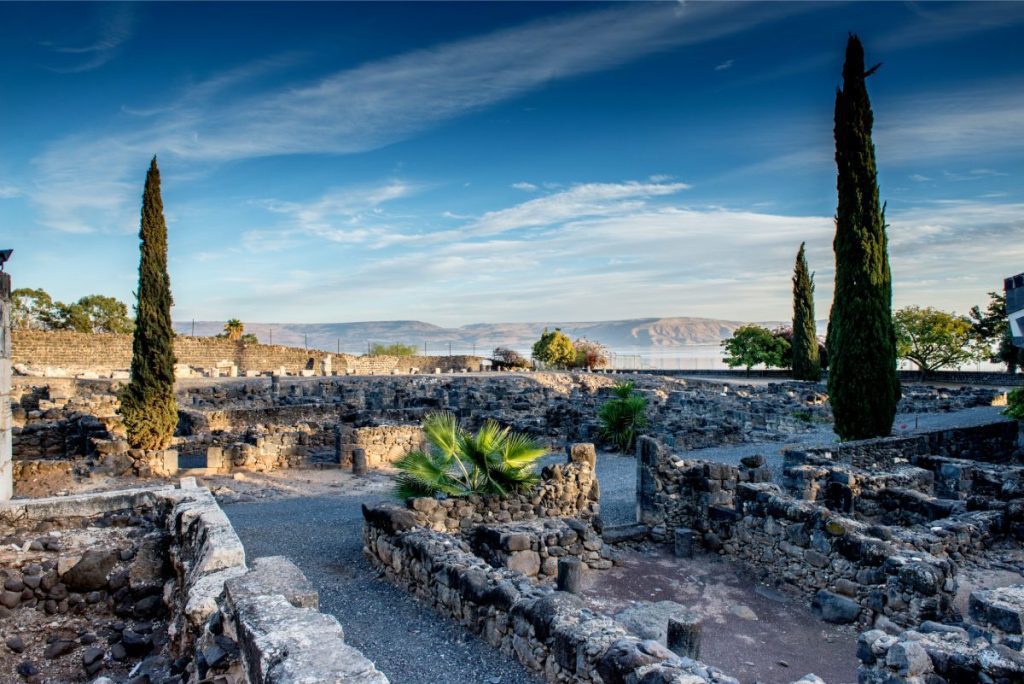Jesus (c. 4 BCE – c. CE 30/33), also referred to as Jesus of Nazareth or Jesus Christ; was a first-century Jewish preacher and religious leader. He is the central figure of Christianity, the world’s largest religion. Most Christians believe he is the Incarnation of God the Son and the awaited Messiah (the Christ) prophesied in the Old Testament.

Virtually all modern scholars of antiquity agree that Jesus existed historically. Although the quest for the historical Jesus has yielded some uncertainty on the historical reliability of the Gospels and on how closely the Jesus portrayed in the Bible reflects the historical Jesus; as the only records of Jesus’ life are contained in the four Gospels.
Who Was Jesus of Nazareth?
Jesus was a Galilean Jew; who was baptized by John the Baptist and began his own ministry. He preached orally and was often referred to as “rabbi”. Jesus debated with fellow Jews on how to best follow God; engaged in healings, taught in parables, and gathered followers. He was arrested and tried by the Jewish authorities; turned over to the Roman government; and crucified on the order of Pontius Pilate; the Roman prefect. After his death, his followers believed he rose from the dead, and the community they formed eventually became the early Church.

So Christian doctrines include the beliefs that the Holy Spirit conceived Jesus; was born of a virgin named Mary, performed miracles, founded the Christian Church, died by crucifixion as a sacrifice to achieve atonement for sin, rose from the dead, and ascended into Heaven; from where he will return. Generally, Christians believe Jesus enables people to be reconciled to God.
Prison of Christ

Also, the Nicene Creed asserts that Jesus will judge the living and the dead either before or after their bodily resurrection; an event tied to the Second Coming of Jesus in Christian eschatology. Furthermore, the great majority of Christians worship Jesus as the incarnation of God the Son, the second of three persons of the Trinity. But a small minority of Christian denominations reject Trinitarianism; wholly or partly, as non-scriptural.
Jesus in the Canonical Gospels
The canonical gospels are four accounts, each written by a different author. The authors of the gospels are all anonymous, attributed by tradition to the four evangelists, each with close ties to Jesus: Mark by John Mark, an associate of Peter; Matthew by one of Jesus’ disciples; Luke by a companion of Paul mentioned in a few epistles; and John by another of Jesus’ disciples, the “beloved disciple”.
The Alpha and the Omega in Christianity

Moreover, concerning the accuracy of the accounts; so viewpoints run the gamut from considering them as inerrant descriptions of the life of Jesus; to doubting whether they are historically reliable on a number of points; to considering them to provide very little historical information about his life beyond the basics. According to a broad scholarly consensus, the Synoptic Gospels (the first three – Matthew, Mark, and Luke); are the most reliable sources of information about Jesus.

According to the Marcan priority; the first to be written was the Gospel of Mark (written CE 60–75); followed by the Gospel of Matthew (CE 65–85); the Gospel of Luke (CE 65–95); and the Gospel of John (CE 75–100). Furthermore, most scholars agree that the authors of Matthew and Luke used Mark as a source when writing their gospels. Since Matthew and Luke also share some content not found in Mark; many scholars explain this by assuming that another source (commonly called the “Q source”) was used by these two authors in addition to Mark.
The Synoptic Gospels
Matthew; Mark; and Luke are known as the Synoptic Gospels; from the Greek σύν (syn “together”) and ὄψις (opsis “view”). They are called “synoptic” because they are similar in content; narrative arrangement, language, and paragraph structure, and one can easily set them next to each other and synoptically compare what is in them. Scholars generally agree that it is impossible to find any direct literary relationship between the Synoptic Gospels and the Gospel of John. While the flow of some events (such as Jesus’ baptism; transfiguration, crucifixion, and interactions with the apostles) are shared among the Synoptic Gospels; incidents such as the transfiguration do not appear in John; which also differs on other matters, such as the Cleansing of the Temple.

The Synoptics emphasize different aspects of Jesus. For example in Mark, Jesus is the Son of God whose mighty works demonstrate the presence of God’s Kingdom. He is a tireless wonder worker, the servant of both God and man. This short gospel records few of Jesus’ words or teachings. On the other hand, the Gospel of Matthew emphasizes that Jesus is the fulfillment of God’s will as revealed in the Old Testament; and he is the Lord of the Church. He is the “Son of David”, a “king”, and the Messiah. Luke presents Jesus as the divine-human savior who shows compassion to the needy. He is the friend of sinners and outcasts, who come to seek and save the lost. This gospel includes well-known parables, such as the Good Samaritan and the Prodigal Son.
The Gospel of John
The prologue to the Gospel of John identifies Jesus as an incarnation of the divine Word (Logos). As the Word, Jesus was eternally present with God; active in all creation; and the source of humanity’s moral and spiritual nature. Jesus is not only greater than any past human prophet but greater than any prophet could be. He not only speaks God’s Word; he is God’s Word. Moreover, In the Gospel of John, Jesus reveals his divine role publicly. Here he is the Bread of Life, the Light of the World, the True Vine, and more.

In general, the authors of the New Testament showed little interest in an absolute chronology of Jesus or in synchronizing the episodes of his life with the secular history of the age. So as stated in John 21:25, the gospels do not claim to provide an exhaustive list of the events in the life of Jesus. In other words, the accounts were primarily written as theological documents in the context of early Christianity, with timelines as a secondary consideration.
In this respect, it is noteworthy that the Gospels devote about one-third of their text to the last week of the life of Jesus in Jerusalem, referred to as the Passion. Although the gospels do not provide enough details to satisfy the demands of modern historians regarding exact dates; it is possible to draw from them a general picture of the life story of Jesus.
On my private tours, there are lots of sites relevant to the events told in the Gospels. And I will TaylorMade your itinerary according to what you wish to see on your visit to the Holy Land.

